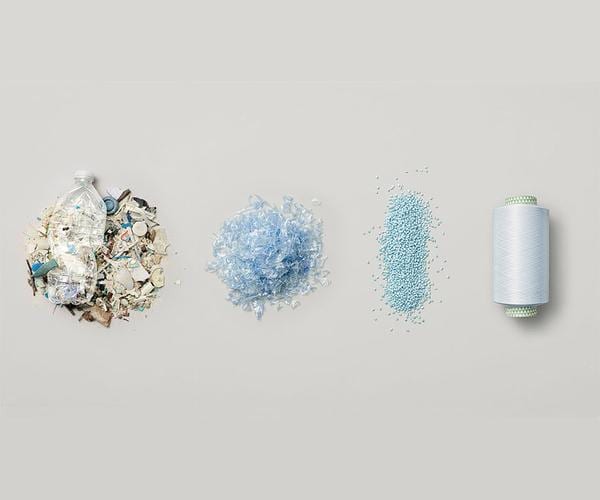
Sustainability in fashion is a hot topic, but will we be able to change our purchasing habits?
Reading Time: 5 minutesFrom landfill to natural fabrics, social responsibility to biofuels, ‘sustainability’ in hospitality covers a variety of issues, but how can you make informed choices that have a positive impact on your staff, clients and the business as a whole?
The gold standard for sustainability in hospitality is set by the likes of Six Senses Hotels Resorts Spas and Zuri Zanzibar, these Fashionizer clients are focused on eco-hospitality and have made conscious commitments about everything from green energy to giving back to the local community, and in doing so are proving the credibility of socially sustainable hospitality.
But what if you’re a hotel manager wanting to make eco-friendly procurement textile decisions, where do you start? The plethora of information surrounding the subject can be confusing and contradictory and how do you prioritize where you start your sustainability journey?
So, here’s what you need to know to make a difference
Here is some basic information on how you can evaluate the sustainability of credentials for textiles. In the next few months, we will be delving further into this subject if you want to know more, just let us know by signing up to our newsletter here.
You may well ask whether your choice of uniforms will really make a difference to the health of our planet? We believe that every decision counts and many sustainable decisions end up changing old practices. Fashionizer believes that including sustainability as a consideration in your purchasing decisions will contribute to the environment.
How to evaluate the lifecycle of textiles?
In textiles, sustainability is about the whole lifecycle of garments. The fashion industry being one of the most polluting industries in the world, with 300,000 tonnes of clothing either incinerated or sent to landfill every year. So, we need to change our practices and make sustainable choices whenever we can.
- How Fibers are grown affects their credentials: depending of the amount of water consumed and the amount of insecticides and pesticides used in the process. For example: cotton, according to WWF, it takes more than 20,000 liters (5,283 gallons) of water to produce just one kilogram (2.2 pounds) of cotton, which roughly equals one T-shirt and a pair of jeans. Cotton also consumes around 16% of the world’s insecticides and 7% of pesticides. Which is why we at Fashionizer spa opt for organic cotton which uses 71% less water, 62% less energy and doesn’t damage the soil.
- How yarns are processed: Is another consideration, toxic chemicals are often used in the processing of a variety of yarns, which have an impact on the air and the environment when they’re washed away.
- How fabrics travel: The carbon footprint of each fabric varies depending on where it’s grown and where it’s processed. For instance, linen is a very sustainable fabric in the way it’s grown and processed, but its carbon footprint is often high. As a fibre grown in Northern Europe (where 90% of the world’s linen is grown) it is often spun in China and then returns to Europe for weaving.
- The ethics of the supply chain: Sustainability is also about the working practices and conditions in the factories along the supply chain. Do they adhere to ethical working practices, free labour and decent working conditions?
- The lifespan of the garments and how much power and water are used when laundering them. Offering your guests to keep their sheets and towels a bit longer is another smalls step making an impact. In the same way with uniforms if we move away from a culture of cheap throwaway fashion, the durability of garments and how we launder them, becomes increasingly important.
- How fabrics can be disposed of: The final part of the lifecycle of your linen and uniforms is what happens once you’ve finished with it. Whether you can recycle it, upcycle it, or if it will biodegrade safely without damaging the environment should also be something you think about before you purchase.
At Fashionizer, responsible choices have been part of the business for 25 years. We have always manufactured in Europe because of the transparent supply chain and assurances around quality, labor practices and ethical standards that were important to us.
Making decisions your uniforms consciously allows you to find the best way to achieve the best results for you and your business.
So what is the price of sustainability?
It’s red alert for climate change and this means we will have to change our habits as well. For a long time fashion & uniform purchases have been focused on and driven by price points. We are still living in a world of fast fashion, but as awareness grows the direction is changing. Today the UK government is also looking to force fashion to change via a clothing tax. And we believe that such actions are only likely to increase over time, driven by consumer demand for more transparent information about the sustainability credentials of brands they choose.
The reality is that in the short-term sustainable uniform choices may cost you a little bit more, but the durability of the product and the benefits you get from being part of this change can make a meaningful difference both to your customers and to the world around you.
Sign up to our blog to learn more about sustainable decision making for you and your business throughout the year.
FOLLOW OUR BLOG
Comments: 0


